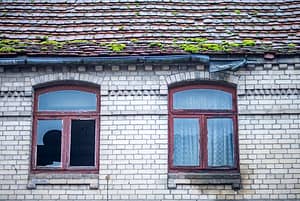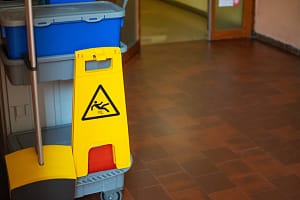Home has never been so important. Not only is it where most of us rest, eat the majority of our meals and spend time with loved ones, it is now where an unprecedented number of us conduct our work. The physical location of where we actually do our work has moved from a company-owned location to our own homes. Where does company responsibility for our health and safety now begin and end? If our home temperatures are too low due to broken heating, our insulation is causing skin irritations our breathing problems, or we have a problem with damp – is it still our own problem, or has our employer’s realm of responsibility been extended?
Joseph G. Allen, assistant professor and director of the Healthy Buildings program at the Harvard T.H. Chan School of Public Health, and John D. Macomber, a senior lecturer in finance at Harvard Business School have recently published the book, Healthy Buildings: How Indoor Spaces Drive Performance and Productivity together. In an article for the Harvard Business Review, they explain how, in the COVID-19 and post-COVID-19 era, employers must ensure the safety of home workspaces.
Allen and Macomber explain that as businesses shift, maybe permanently, to work-from-home or work-from-anywhere, the line of responsibility for the workplace also changes, and goes outside “the office” or “the factory.” They explain: “If the heat were off for days in your company’s workplace, or the water had to be boiled, for sure this would be fixed immediately to keep employees safe (and productive) and keep customers coming. What about if your people will be working from home, not just during a freeze but as a new way of working? Investments should extend beyond traditional workplaces right into people’s houses and apartments.”
They go on to explain the business rationale for making such investments. They point out the long-term costs of bad health of employees, customers, vendors, and their families. They extend that to families, explaining that people will not work as well when a family member is sick at home. In addition they outline the avoided costs of future health expenses. For Allen and Macomber, this is where there are real economic savings above just being a considerate company and good citizen. Finally, the ask us to think about homes as well as workplaces. They believe that offering incentives for keeping a “healthy home” will pay off for companies since they a) would be less exposed to liability claims around the extended definition of the workplace and b) employees would simply work better and more productively.
There is no question that Allen and Macomber have opened up an important debate and this topic must be probed further. What is a reasonable level of responsibility for companies to take? If an employee’s home has suffered a long term damp problem, it might not be considered the employer’s problem to fix that. But it could be in their interests to prevent long term health problems and so perhaps they would offer grants to employees in those circumstances. However, the lines could become very blurred.
There have been many stories of employees adapting their homes to accommodate their new home-working lifestyles. In the early days of the pandemic, this amounted to funny stories of home-workers converting their ironing boards into “standing desks”. But as the year rolled on, more elaborate home improvements were taking place. What could and should a company do if an employee is converting his garage into an office and suffers skin irritation or a longer term breathing problem such as COPD from installing mineral wool insulation?
This has the potential to become a minefield for both the employer and employee. Should the employee consult with his employer before adapting his own home? Should the employer have told him to wear a mask as he installed mineral wool insulation? It is easy to see how resentment could build on both sides, with an employee resenting an employer, feeling boundaries are being crossed. The same is true for companies, as they feel there could be no end to their responsibility as increasingly employees’ private homes become places of work.
All indications are that, even after the pandemic subsides, our work habits and locations will have changed forever. Business travel is unlikely to bounce back to its previous levels since we have all learned the cost-saving advantage of meeting via Zoom. We are also likely to retain the model of at least some employees working from home for at least some of the week. The employers have learned they do not need quite so much office space and employees have learned they do not really want or need the daily commute to an official office. This reality means that the changing relationship between an employer and an employee’s home need to ne navigated in a way that is fair for both sides.






Leave a Comment